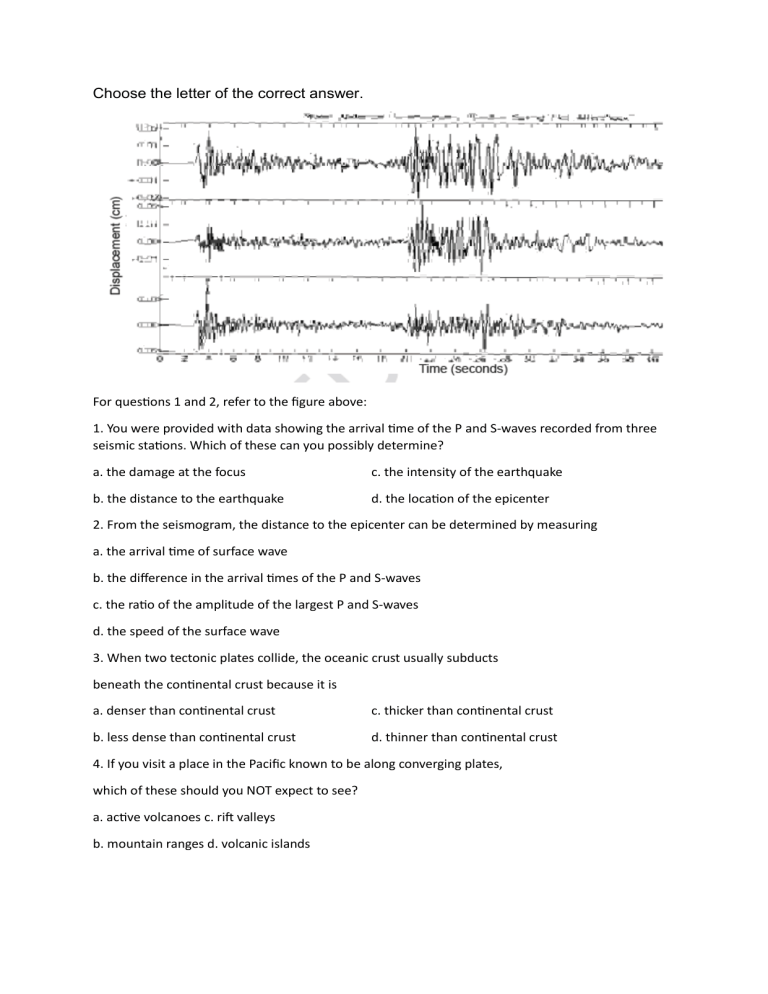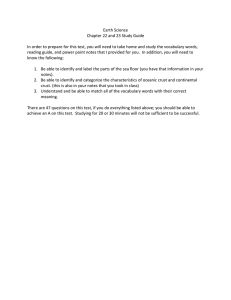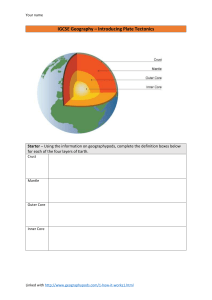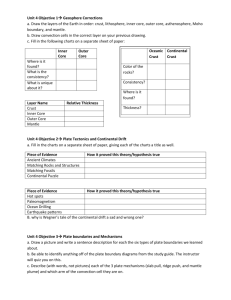
Choose the letter of the correct answer. For questions 1 and 2, refer to the figure above: 1. You were provided with data showing the arrival time of the P and S-waves recorded from three seismic stations. Which of these can you possibly determine? a. the damage at the focus c. the intensity of the earthquake b. the distance to the earthquake d. the location of the epicenter 2. From the seismogram, the distance to the epicenter can be determined by measuring a. the arrival time of surface wave b. the difference in the arrival times of the P and S-waves c. the ratio of the amplitude of the largest P and S-waves d. the speed of the surface wave 3. When two tectonic plates collide, the oceanic crust usually subducts beneath the continental crust because it is a. denser than continental crust c. thicker than continental crust b. less dense than continental crust d. thinner than continental crust 4. If you visit a place in the Pacific known to be along converging plates, which of these should you NOT expect to see? a. active volcanoes c. rift valleys b. mountain ranges d. volcanic islands 5. You are an oceanographer and want to map the ocean floor on the east coast of the Philippines. As you do your study, you notice that there is a portion in the ocean floor which is relatively much deeper than the rest. What most likely is that deeper part? a. linear sea c. rift valley b. oceanic ridge d. trench 6. What do you expect to find at a mid-ocean ridge? a. relatively young rocks c. thick accumulation of sediments b. reverse fault d. very ancient rocks 7. Crustal plate A is moving away from crustal plate B. What is the expected average rate of change in position between A and B? a. a few centimeters per year c. a few millimeters per century b. a few meters per month d. a few millimeters per day 8. Which plate boundary is formed between the Philippine plate and the Eurasian plate? a. convergent c. reverse fault b. divergent d. transform fault 9. Which of these is false about lithosperic plates: a. have the same thickness everywhere c. thickest in the mountain regions b. include the crust and upper mantle d. vary in thickness 10. Which of these is NOT true about the Philippine islands? a. most are part of the Philippine Mobile Belt, except for Palawan, Mindoro, and Zamboanga b. formed because of the convergence of the Philippine plate and the Pacific plate c. originated geologically in an oceanic-oceanic convergence d. some are products of subduction process 6. You were asked to locate the epicenter of a recent earthquake. Which correct sequence of events should you follow? i. Determine the difference in the arrival time of S and P waves recorded from each of the seismological stations. ii. Use the triangulation method to locate the center. iii. Obtain data from three different seismological stations. iv. Determine the distance of the epicenter from the station. a. i, iii, ii, iv b. iii, i, iv, ii c. iii, iv, i, ii d. iv, ii, i, iii








